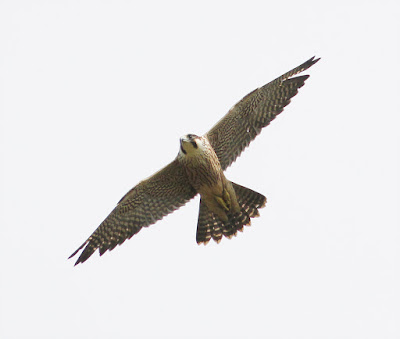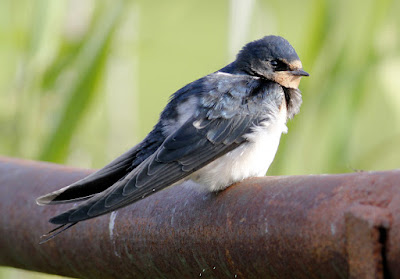I couldn’t get out birding on Monday morning so settled for a few hours at Pilling after lunch and a walk along the sea wall to hit the incoming tide.
After a period when there was hardly any activity I think the local Kestrels have finally produced a family. I saw two juveniles close together along a barbed wire fence at Fluke Hall and then soon after there was an adult bird about 150 yards away.
The wood was quiet again apart from a Great-spotted Woodpecker calling from deep in the trees and a good deal of noise and activity around a number of Tree Sparrow boxes. The cool and wet spring has been one of poor productivity for many species, including Tree Sparrows. Recent weather is a little warmer and Tree Sparrows have the ability to produce youngsters until quite late in the season as long as there are insects with which to feed the chicks.
Tree Sparrow
I set off for the sea wall in time to see a Buzzard take off from the fence ahead of me and then circle around calling before flying into the trees above the road.
As the tide began to flow in there was lots of activity along the distant shore but the gulls and waders didn’t settle for long because of the almost constant attentions of a Peregrine beating up and down the tideline.
Peregrine
In the course of an hour the Peregrine made at least eight forays into the birds along the shore from left, right and above, each time scattering the groups in all directions. After each attempt it would soar slowly at some height as if gathering strength and then launch itself into another headlong dash along the shore where it panicked the roosting birds into the air again. How can one raptor cause such pandemonium?
Peregrine
Peregrine
Wader counts here are often approximate but made more so today by that determined Peregrine - 600 Oystercatcher, 350+ Curlew, 85 Golden Plover, 190 Lapwing, 60+ Dunlin, 30+Ringed Plover, 4 Black-tailed Godwit and 1+ Whimbrel.
Curlew
I didn’t see the Peregrine catch a meal and think it flew off to try its luck elsewhere because the noise and activity subsided just as the tide began to ebb. Most of the shell-shocked waders had gone too and I was left to study the gulls.
Peregrine
There were good numbers of Black-headed Gulls left on the water, perhaps 400+, 2 Teal, 4 Little Egret and 2 Grey Heron. Two Sandwich Terns lifted off from a patch of marsh and then headed west towards Knott End, calling as they went.
Sandwich Tern
“Bits and pieces” totted up to 18 Linnet, 4 Skylark, 1 Pied Wagtail, 20+ Swallows.
The summer holidays are here so it’s child minding Olivia and Isabella tomorrow with no birding until Wednesday on Another Bird Blog. Tune in then for more news, views and pictures of birds.
Until then I'm linking to Stewart's World Bird Wednesday.
Until then I'm linking to Stewart's World Bird Wednesday.

















































.jpg)












